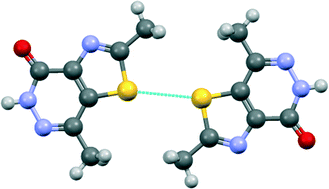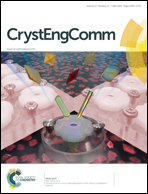Quantifying the symmetry preferences of intermolecular interactions in organic crystal structures†
Abstract
The symmetry of a crystal structure and the types of intermolecular interactions found therein are related. We have quantified the extent to which this is the case for a wide variety of interactions using two different statistical approaches. The results show that symmetry effects can be huge; for example, over 67% of S(thiocarbonyl)⋯H(O,N) interactions involve molecules related by inversion but less than 10% of C(methyl)⋯O(ether) interactions. Unsurprisingly, the strongest symmetry preferences are often in favour of inversion, but there are many smaller but significant preferences for other symmetries. For example, carbonyl carbon atoms show their highest propensity to interact with carbon-bound halogen atoms when the interacting molecules are related by a screw axis. While many of the symmetry preferences can be understood, others are more difficult to rationalise.


 Please wait while we load your content...
Please wait while we load your content...